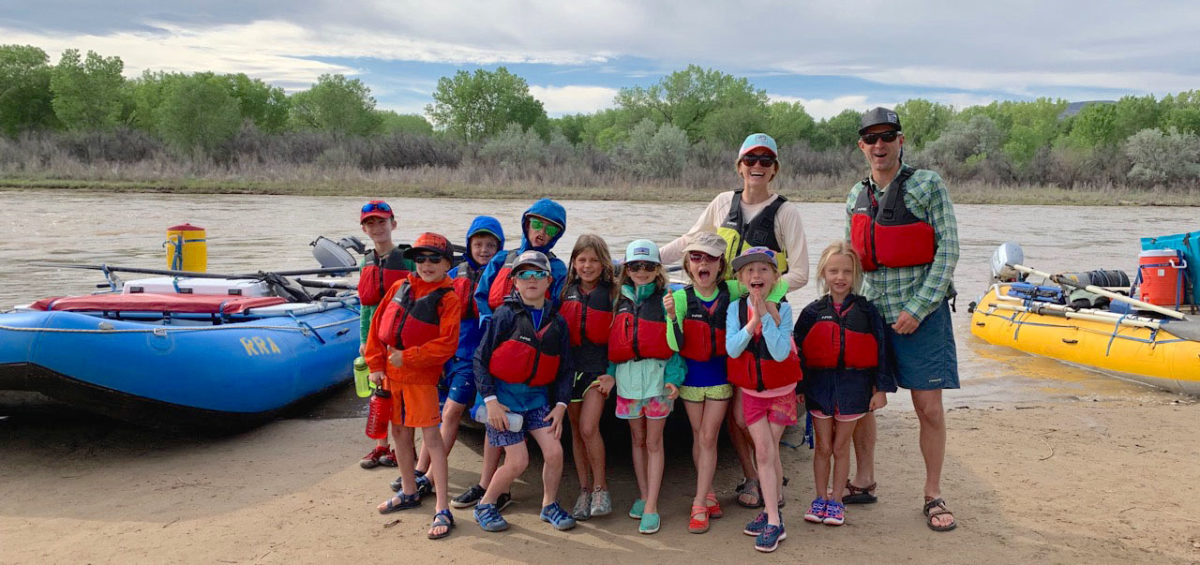This spring, the first and second graders traveled to Fruita, Colorado on a three-day mission to extend their classroom study of dinosaurs and learn more about the region’s natural history.
The first stop was a visit to the Dinosaur Journey Museum. The students conducted individual research to complete their immersion projects with hands-on opportunities to learn about the dinosaurs that roamed the western slope of Colorado.
The museum displayed fossils, cast skeletons, and robotic reconstructions of dinosaurs from the Fruita region. While there, students investigated skeletons, bones, and footprints, and learned about other, related animals such as a species of fish that avoided extinction and still thrive today in local rivers. Students made connections with classroom learning through hands-on experience with paleontology digs and working where laboratory scientists were piecing together bone fragments from local quarry sites.
In one exhibit, the students climbed into a life-sized dinosaur heart to write in their journals. In another, they experienced a simulated earthquake. Throughout, they gained a deeper understanding of the ancient landscapes and animals of the Jurassic and Cretaceous periods when dinosaurs roamed in our backyard.
With a better idea of the region’s ancient history, the class launched the next leg of their trip; rafting down the Colorado River with “Captain Cook” (a river guide who has led the Mountain School Ruby Horse Thief trips for at least a decade.)
During this 25-mile journey, students learned about species that now reside on the western slope and have their roots in the dinosaur eras, including birds and lizards. From blue herons to ospreys, cliff swallows, and peregrine falcons, the evolutionary path of dinosaurs revealed itself to students as they floated through the same canyon layers that hold the region’s dinosaur bones. While the group didn’t see any desert bighorns this trip, they did witness a pronghorn antelope. The sightings allowed the students to learn some quick trivia: the peregrine falcon is the absolute fastest animal, and the pronghorn is the fastest land animal in North America. Along the river, cliffs with some of the oldest geological rock formations in Colorado surrounded the students.
Floating deeper into the canyon, the students traveled even further back in time. At the mid-point of the float trip, students explored the Vishnu schist- the black rock core of the canyon. Among the oldest rocks found anywhere in North America, these rocks were formed over a billion years before dinosaurs roamed the Earth. While overcast skies kept students from overheating, it didn’t stop them from participating in the traditional “swim to Utah” where everyone jumped overboard and floated across the state line.
Having floated through time, the students then swapped life jackets for hiking boots as they hiked through Rabbit Valley and hunted for dinosaur bones in the Morrison Formation.
Famous for dinosaur bones and uranium deposits, this layer of rock also outcrops just below the school campus. While hiking, the students explored numerous dinosaur bone fossils, including large vertebrae still embedded in the cliff layers. This final leg of the journey brought a better understanding of the Earth’s geologic history to life.
During the trip, students watched birds soar overhead, and lizards skitter across ancient rock layers that hold dinosaur fossils. Contemplating what they had learned, one student reflected on how fun each part of the trip had been and how it had made the classroom learning come alive.
Throughout~ adventure, songs, and reflection provided meaningful experiences for individual growth and class bonding.
Mission accomplished!
~Andy Shoff
Head of School & Trip Leader
~Jordan Watts
1/2 Teacher & Trip Leader





Leave a Comment